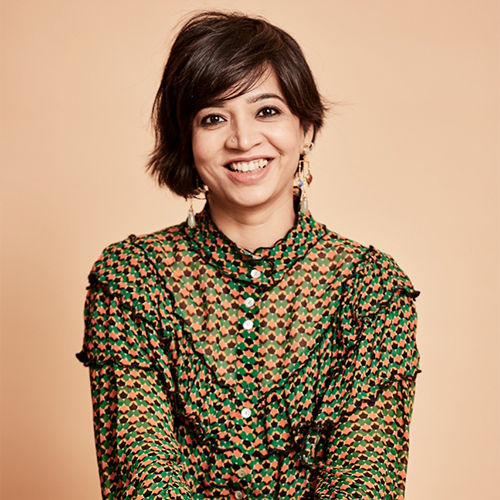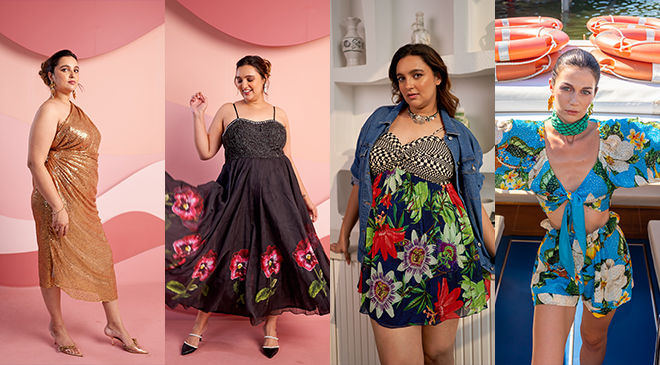
Pallavi Singhee
Founder
Label - Verb
The blend of old and new is key to our distinct style
Verb is a versatile brand, made to dress a woman who is free; free to decide how she wants to dress, who she wants to be and how she wants to live. The line captures the conflict between tradition and modernity by using prints and techniques inspired by history wrapped in silhouettes and fabrics of urban international trends. Speaking to Fibre2Fashion, Founder Pallavi Singhee discusses the brand’s journey, philosophy, design approach, customer feedback influence, and future aspirations.
Fibre2Fashion: What inspired you to establish Verb and what challenges have you faced in merging diverse cultural inspirations into your brand?
Pallavi Singhee:
Establishing Verb at the age of 26 was driven by my prior experience working for Sabyasachi for four years, where I nurtured a desire for self-expression and exploration through my style. Our aspiration for Verb is to create a global brand that incorporates local influences. Achieving this involves ensuring that the cultural elements we incorporate resonate positively across diverse audiences.
F2F: What inspired the choice of the name ‘Verb’ for your brand?
PS:
The inspiration behind naming the brand 'Verb' stems from the philosophical idea that we are active participants in the universe – we are verbs, not nouns. This concept highlights that we are the consciousness of the universe, manifesting briefly with a name and gender. Additionally, the word 'verb' aligns with the notion of action and creation. The term 'to fashion' itself is a verb, symbolising an act of doing. Hence, the name 'Verb' encapsulates both our philosophical perspective and our core activity in the realm of fashion.
F2F: Can you share specific instances or experiences that shaped your journey from a conservative family to founding a brand that embodies freedom?
PS:
My upbringing was protective and comfortable, rooted in my parents' love and possessiveness rather than any regressive or dogmatic beliefs. They were, in fact, quite liberal and always encouraged open conversation, emphasising the importance of exploration in finding one’s own identity, strengths, and personality. This nurturing environment shaped my belief system, which is now reflected in my brand.
F2F: How would you describe the idiosyncratic style of Verb in your own words?
PS:
Dress for leisure, dress for pleasure.
F2F: Could you walk us through your creative process when conceptualising a new collection?
PS:
Our inspiration is life itself. Our clothing embodies the motto of celebration – a celebration of life. We find our muse in various elements like nature, music, art, and culture. Once we identify a specific aspect or mood that inspires us, we begin experimenting with forms, colours, and techniques. These ideas gradually take shape in our clothing designs.
F2F: What prints and techniques are utilised to maintain the modern yet traditional aesthetics in your designs?
PS:
Our designs merge modern and traditional aesthetics by drawing inspiration from history, art, and culture, while making them contemporary and commercial through various approaches. For instance, we select new surfaces and fabrics, developing and exploring unique weaves and embroideries. Additionally, we incorporate trending colours and silhouettes, ensuring our designs stay current yet retain a traditional essence. This blend of old and new is key to our distinct style.
F2F: What strategies have you employed to maintain the brand’s relevance and adapt to changing fashion landscapes?
PS:
We just go with the flow. We believe in exploring, learning, and accepting both failures and successes as part of our journey. As a creative mind, my focus is less on building a rapidly scaling business and more on embracing our learning curve, which means we don't adhere to rigid strategies.
F2F: Are there specific milestones or achievements that stand out in the brand’s journey so far?
PS:
In our brand's journey, every achievement, no matter how small, has been special and memorable. It's challenging to single out specific milestones because each one, from our first fashion week appearance to the first time a celebrity was spotted in our designs, and our first export order, has been incredibly heart-warming and fulfilling.
F2F: Are there any specific feedback or stories from customers that have had a significant impact on your approach to design?
PS:
Feedback from our customers is integral to our design process, as it significantly influences our approach. While our designs are individualistic and aligned with our brand identity, addressing consumer needs is paramount, especially since we are not selling art, but fashion, where the consumer is of prime importance.
F2F: Are there specific goals or aspirations for the brand’s future that you would like to share?
PS:
In the crowded fashion market, where consumers often encounter uninspiring, mass-produced clothing lacking in both style and sustainability, our goal for Verb is to stand out. We aim to offer unique products that enable consumers to develop and own their sense of style comfortably. We recognise that many consumers hesitate to try new fashion products and styles, fearing they might not be able to carry them off or unsure about how and where to wear them.

Rahul Mehta
Fanny Vermandel
Bill D’Arienzo
Aseem Prakash
Rahul Mehta
Gabi Seligsohn
Abhay Gupta
Pradip Mehta
Anurag Batra
Arun Sirdeshmukh


20230103183907.png)
_8.JPG)









